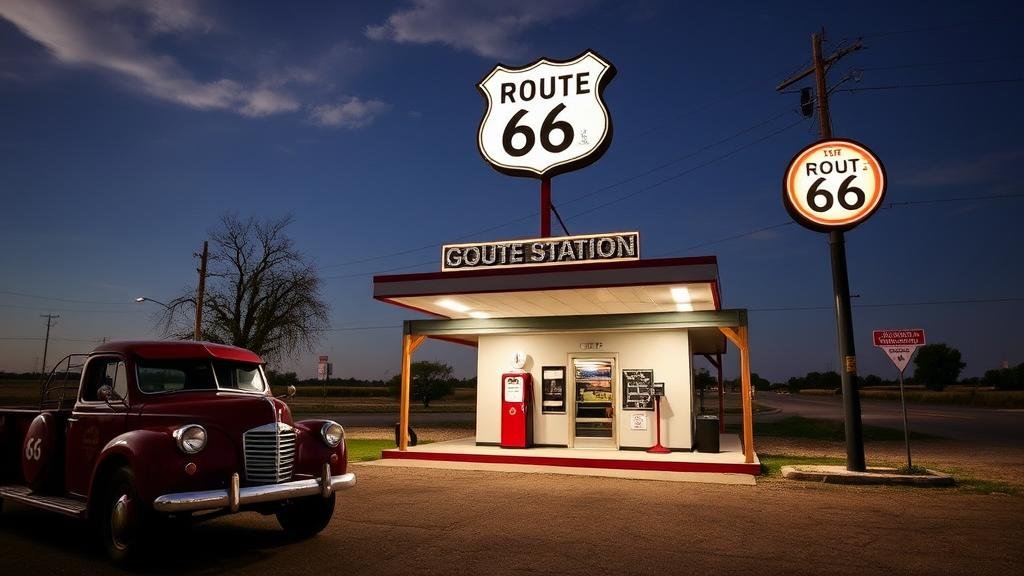Using Early Gas Station Directories to Locate Route 66 Relics
Using Early Gas Station Directories to Locate Route 66 Relics
The historic Route 66, often referred to as the Main Street of America, is a symbol of American automotive culture and travel. Established in 1926, this iconic highway stretches from Chicago, Illinois, to Santa Monica, California, covering over 2,400 miles. As the route gained popularity, it became a vital artery for commerce and culture, leading to the development of numerous gas stations, diners, and motels. This article explores the significance of early gas station directories in locating and preserving Route 66 relics, enhancing our understanding of its commercial history and cultural impact.
The Role of Gas Stations on Route 66
Gas stations emerged as essential hubs for travelers along Route 66, providing fuel, food, and rest. The proliferation of these establishments contributed significantly to the roads commercial landscape. In fact, Circa 1940, over 30,000 gas stations dotted the United States, many of which were located along the Route 66 corridor.
- Early gas stations were often family-owned businesses.
- Many featured unique architecture reflecting regional styles.
- Gas stations frequently acted as social gathering points for travelers.
Early Gas Station Directories: A Historical Perspective
Early gas station directories served as vital tools for navigating Route 66. e directories, published primarily in the 1930s through the 1960s, provided detailed information about the locations, services, and ownership of gas stations along the route. One significant example is the Standard Oil Route 66 Guide, published in 1939, which included maps and descriptions of gas stations across the highway.
As the automobile became more accessible, the demand for information about gas stations surged. Entrepreneurs and service organizations created these directories, which not only informed travelers but also included advertisements, thereby promoting local businesses.
Locating Route 66 Relics Through Directories
The meticulous records found in early gas station directories provide invaluable insights into the historical presence of various businesses along Route 66. By cross-referencing these directories with current maps and historical records, researchers can identify the specific locations of former gas stations and other related relics. For example, the directories can illuminate the locations of old gas pumps, road signage, and service sheds, many of which remain standing yet forgotten.
- The Rib Crib, a diner in Missouri, was noted in the 1950 gas station directory.
- The Route 66 Diner in New Mexico appears in early directories, showcasing the joint evolution of gas stations and eateries.
Methodologies for Research and Preservation
Researching early gas station directories involves a multi-faceted approach. Scholars utilize various methodologies, including:
- Archival Research: Accessing libraries and online databases for digitized copies of historical directories.
- Field Research: Conducting site visits to identify remaining structures associated with historical gas stations.
- Oral Histories: Gathering narratives from the community to add personal context to the historical data.
These methodologies not only help pinpoint the locations of relics but also aid in crafting narratives around the significance of these places to local history and culture.
Case Study: The Route 66 Gas Station in Tucumcari, New Mexico
One illustrative case is the old Phillips 66 gas station located in Tucumcari, New Mexico. Designed in the Streamline Moderne style, this particular station was initially opened in the 1930s and served the burgeoning number of travelers on Route 66. By consulting early gas station directories, researchers established that this location was listed in the 1949 edition, revealing its longstanding significance to motorists.
Restoration efforts have since been launched to preserve the structure, acknowledging its importance in the narrative of Route 66 travel culture. The efforts include:
- Community fundraising for restoration.
- Incorporating the site into local and state historical registries.
- Offering guided tours highlighting the stations historical context.
Implications for Future Research
Utilizing early gas station directories fosters a deeper appreciation for Route 66s cultural landscape. e directories are essential not only in locating relics but also in understanding the commercial evolution of roadside America. Future research endeavors may focus on:
- Creating digital archives of gas station directories for public access.
- Exploring the socioeconomic impacts of gas stations on Route 66 towns.
- Investigating the relationships between travelers and the businesses that catered to them.
Conclusion
To wrap up, early gas station directories are invaluable resources in the study of Route 66 and its historical relics. By leveraging these documents, researchers can uncover lost narratives, preserve cultural heritage, and foster a deeper understanding of American travel history. blend of academic research, community engagement, and preservation efforts serves to keep the spirit of Route 66 alive for future generations. As we continue to explore this storied highway, the stories of its gas stations and the people who operated them remind us of a bygone era of American exploration and adventure.



